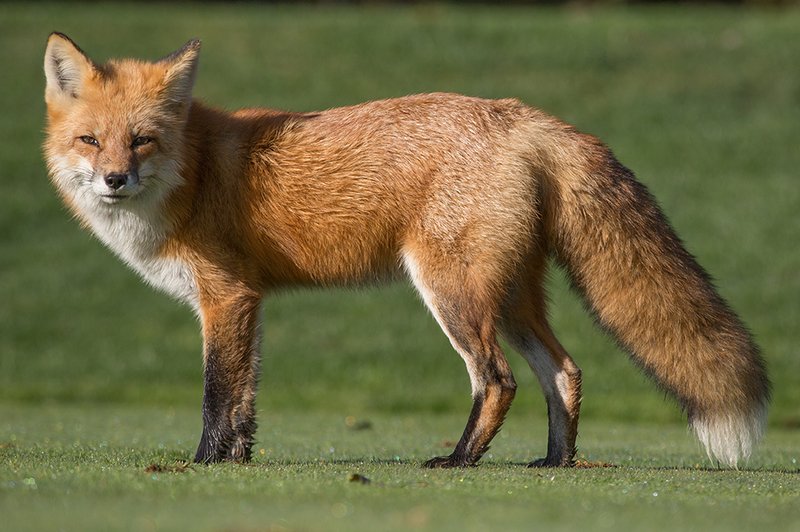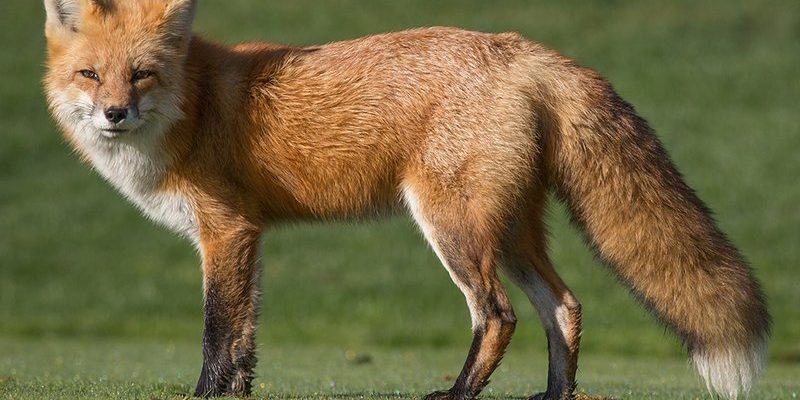
Red foxes are fascinating creatures with a host of unique behaviors and adaptations. They have adapted beautifully to a wide variety of environments, from forests to urban areas, which only highlights their versatility. So, what makes them so integral to their surroundings? Let’s dive into the different roles they play in their ecosystems. Trust me, it’s more interesting than you might think!
Top Predator and Prey Interactions
Red foxes are classified as mesopredators, which means they sit in the middle of the food chain. They have a diet that includes small mammals like rabbits, rodents, and even birds. This ability to hunt smaller animals helps control their populations. Think of it as a natural form of pest management. When foxes thrive, they help keep the numbers of small mammals in check, preventing overpopulation that could lead to habitat destruction.
On the flip side, foxes themselves are also prey. Larger predators, such as coyotes and eagles, may hunt them. This dynamic nature of predator-prey relationships ensures that the ecosystem remains balanced. For example, if fox populations surge, it may lead to a decline in small mammals, which could eventually impact the food sources of larger predators. The cyclic dance of life and death in the wild is fascinating!
Scavenging and Waste Reduction
Here’s the thing: red foxes are not picky eaters. They often scavenge for food, which means they’ll eat just about anything they can find, from leftover carrion to fruits and insects. This scavenging behavior plays an essential role in waste reduction in their habitat.
By consuming what others might consider “waste,” red foxes help prevent the spread of disease and promote nutrient cycling. Think about the last time you saw a forgotten sandwich – not all critters clean up after us humans! This highlights the importance of foxes in their ecosystems, serving as natural cleansers that recycle nutrients back into the soil.
Seed Dispersal and Habitat Health
Besides being voracious eaters, red foxes contribute to their ecosystems in another fascinating way: seed dispersal. Yes, you read that right! Foxes often consume fruits and berries, then travel far and wide before pooping. This natural process disperses seeds far from the parent plant, which helps promote plant diversity.
You might be thinking, “How does this matter?” Well, a diverse plant community supports various animal species, including insects, birds, and other mammals. More plants mean more food and shelter for different creatures, creating a rich tapestry of life and enhancing overall habitat health.
Indicator Species for Ecosystem Health
Red foxes are often considered indicator species, meaning their presence, absence, or abundance reflects the overall health of an ecosystem. Since foxes are sensitive to changes in their environments—like habitat loss or pollution—observing their populations can provide insight into the well-being of the ecosystem.
For instance, if red fox numbers begin to dwindle, it might indicate problems such as habitat degradation or a drop in available prey. This is useful data for conservationists and ecologists, as they can take steps to address these issues before they escalate into more significant problems.
Interactions with Humans: The Urban Adaptations
You might be surprised to learn that red foxes have also become adept urban dwellers. They are often spotted in cities, scavenging through trash cans or roaming neighborhood parks. Their ability to adapt to urban environments showcases their intelligence and resilience.
However, this interaction with humans can lead to conflicts. While some people enjoy seeing these beautiful animals, others may not appreciate them rummaging through garbage or causing disturbances. It’s essential to strike a balance where both foxes and humans can coexist peacefully. Educating ourselves about their role in the ecosystem can foster more effective ways to manage these interactions.
Conservation and Future of Red Foxes
As with many wildlife species, red foxes face threats due to habitat loss, hunting, and road traffic. Conservation efforts are crucial to ensure their survival and, by extension, the health of their ecosystems. Restoring habitats, promoting wildlife corridors, and raising awareness about the importance of foxes can help mitigate these threats.
It’s vital to recognize that red foxes are not just another animal in the wild. They are a critical piece of the ecological puzzle, and their absence could lead to significant issues. Supporting local conservation efforts can help maintain the delicate balance of the ecosystems they inhabit.
Understanding the red fox’s role in its ecosystem gives us a deeper appreciation for these remarkable animals. They are not just cute critters; they contribute to the health and balance of their environments in numerous ways—as predators, scavengers, seed dispersers, and indicators of ecosystem health.
So, the next time you hear the rustle of leaves or catch a glimpse of a red fox in the wild, take a moment to reflect on their impact. They remind us that every creature, no matter how small, plays a part in the grand story of our planet. Let’s work together to ensure their story continues!

